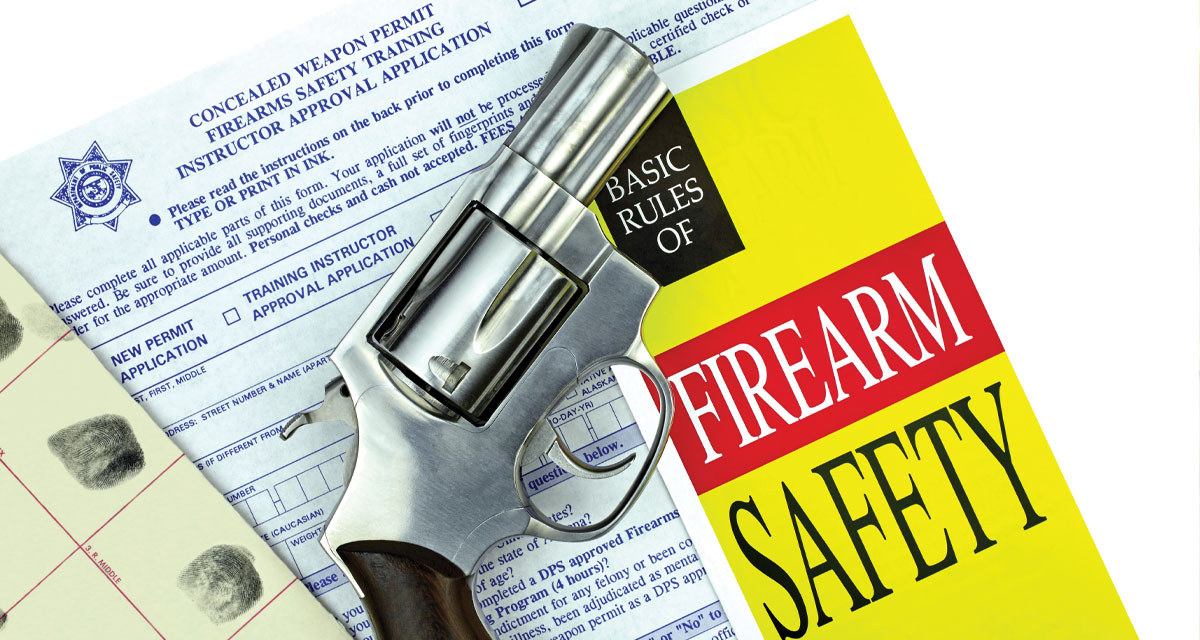“What-if?”, the worrisome words, arrive in the mind’s consciously spinning topics, from safety and financial security to loved ones and pet health. Asking, “What can I do?” leads to a proactive decision to invest time in the ultimate insurance policy—valuable life skills comprising security, shelter, food, water, and medical care! In any emergency, from extreme weather to a personal disaster, you have the power to take charge of your fate by making plans and taking action!
Here, there, and everywhere, a threat is lurking. Americans no longer reside in a place of open trust or unlocked doors. While police and security presence offer a feeling of comfort, one cannot entrust their safety in just hope and prayer alone. Deciding to pursue a concealed carry permit is not taken lightly. Some will say certification makes them more observant, avoid conflict, and less likely to act carelessly, rush, or break laws. Others may claim carrying is a right of personal protection against victimization. The decision to commit to the responsibilities of carrying a firearm could also potentially be a life-saving solution or end a threat.
Before Certification
The first question to ask yourself is “why?” Buying a handgun for the need to feel safer isn’t the solution, primarily if you have never held or shot a gun before. Before investing in the time and expense of a handgun, start with a pistol or firearms course. Participants will gain insight into holding a pistol correctly, clearing, loading, firing, and using appropriate storage measures in a safe environment; then, for added comfort, register for additional classes and visit the range with like-minded friends.
Obtaining Certification
If ready to pursue the next step, seek out businesses that offer marksmanship training and classes that have a schedule to register for a Concealed Carry Weapon (CCW) class. It will deliver a full day of instruction from a booklet explaining state laws, basic firearm safety rules, proper shooting stances, parts of a pistol, and cleaning procedures. Instructors are receptive to questions and help explain class material and other educational ideas. Participants will need to bring a holster, a handgun, hearing protection, and eyewear, leaving ammunition behind. Expect to perform a live-fire test observed by the instructor. At the end of the class, depart with your test score and a paper certificate.
The Next Step
As with a pair of shoes, buyers will want to hold the handgun before purchasing. Most ranges will rent pistols or recommend what women claim feels good in their hands. In filling out an application at your local sheriff’s office, including fingerprinting, a background and mental health check, applicants will need to register their concealed-carry handgun. The benefits of applying in person eliminate a convenience fee; however, there is a payment for the permit, background check, and notary’s signature. The next step is patience. When the permit is ready for pick-up, a representative from the Sheriff’s Office will call.
Expect a Lifestyle Change
Concealed-carry is not an easy responsibility. Day-to-day behaviors change, including clothing choices, the added weight on a hip, the inconvenience when going to the bathroom, the act of changing postures from seated to standing, and knowing the rules—not all businesses and states support Second Amendment rights or licensure.
It’s rare, actually, to hear of the heroism of citizens in good standing who prevented a deadly attack, whether it’s at a church, business, public location, or home. The stories speak of citizens who received training, respect the weapon, and know the repercussions when pulling the trigger. Bad situations do happen. Permit holders do not become complacent. Constant vigilance, awareness, and practice ensure every permit holder can step forward in a dangerous situation by using their weapon only as a last resort.
Next Month: “What-If?” Presents Building a First-Aid Kit



















